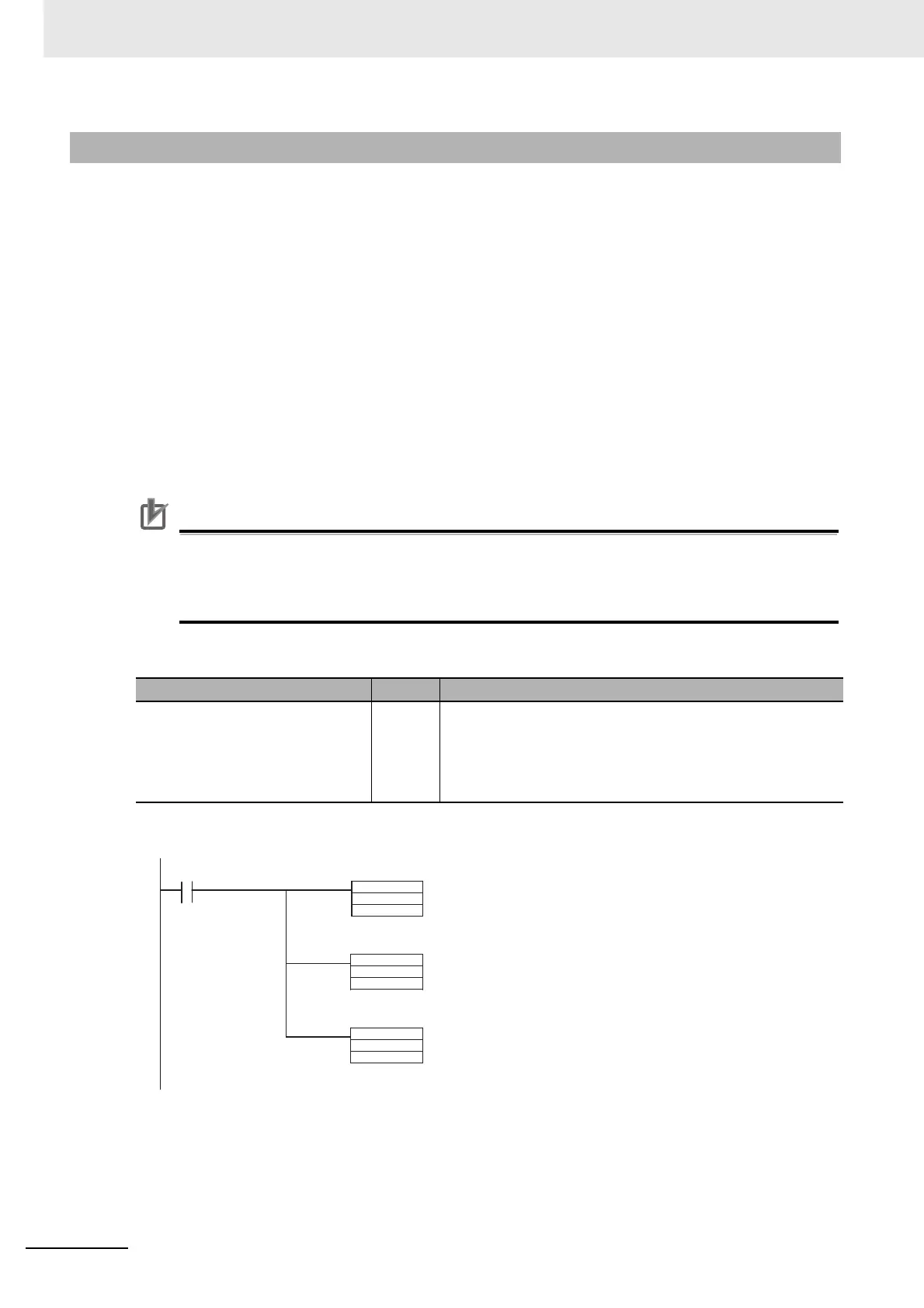10 CPU Unit Functions
10-78
CJ2 CPU Unit Software User’s Manual
FAL(006) and FALS(007) can be used to intentionally create fatal and non-fatal system errors. This can
be used in system debugging to test display messages on Programmable Terminals (PTs) or other
operator interfaces.
Use the following procedure.
1 Set the FAL or FALS number to use for simulation in A529. (A529 is used when simulating errors
for FAL(006) and FALS(007).)
2 Set the FAL or FALS number to use for simulation as the first operand of FAL(006) or FALS(007).
3 Set the error code and error to be simulated as the second operands (S and S+1) of FAL(006) or
FALS(007). Indicate a non-fatal error for FAL(006) and a fatal error for FALS(007).
To simulate more than one system error, specify the same value at A529 for the first operand, and use
more than one FAL(006) or FALS(007) instruction with a different second operand.
Precautions for Correct UsePrecautions for Correct Use
This function is used to check if detection is operating correctly in applications by simulating an
error to be detected in the CPU Unit. When the system is in operation, disable this function by
deleting the FAL(006) or FALS(007) instruction or by always inputting an OFF (P_Off) signal as
the input condition.
z Auxiliary Area Flags and Words
z Example for a Battery Error
10-7-9 Simulating System Errors
Name Address Operation
FAL/FALS Number for System Error
Simulation
A529 Set a dummy FAL/FALS number to use to simulate the system
error.
0001 to 01FF hex: FAL/FALS numbers 1 to 511
0000 or 0200 to FFFF hex: No FAL/FALS number for system
error simulation.
MOV
&100
A529
a
MOV
#00F7
D00010
FAL
100
D00010
Set FAL number 100 in A529.
Set error code for battery error
(#00F7) in D00010.
Execution condition
Generate a battery error using
FAL number 100.
